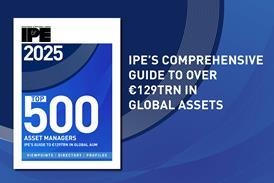Paul Lorentz, Manulife Asset & Wealth Management: Canada to Europe, via Asia

Values are changing rapidly in the world of asset management. Leaders come and go, but perhaps less so than in the past, and loyalty to a company is increasingly appreciated by clients, as a sign of commitment and stability.
This content is only available to IPE Members
Already an IPE Member? Sign in here
Unlock your IPE Membership Package
For unlimited access to IPE’s industry-leading market intelligence, comprising news, data and long-form content on European pensions and institutional investment.
What type of organisation do you work for?
- Secure online payment
- Free European delivery
- Best value for price
IPE Membership
IPE has created a suite of products and services for Europe’s institutional investment and pensions community.
Premium content
Pension fund interviews,
country analysis and data
country analysis and data
Opinion and analysis
Asset classes
and strategies in depth
and strategies in depth








